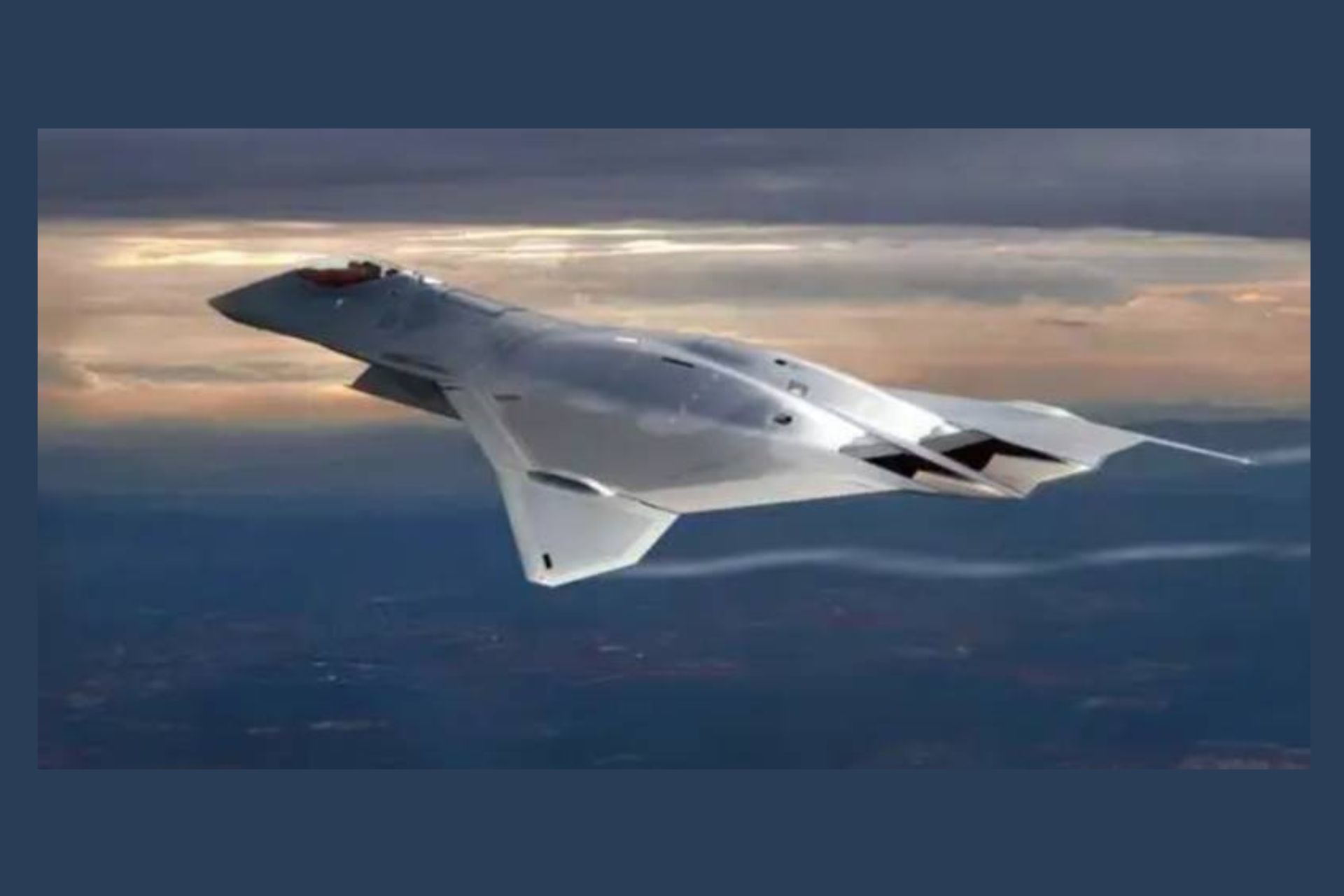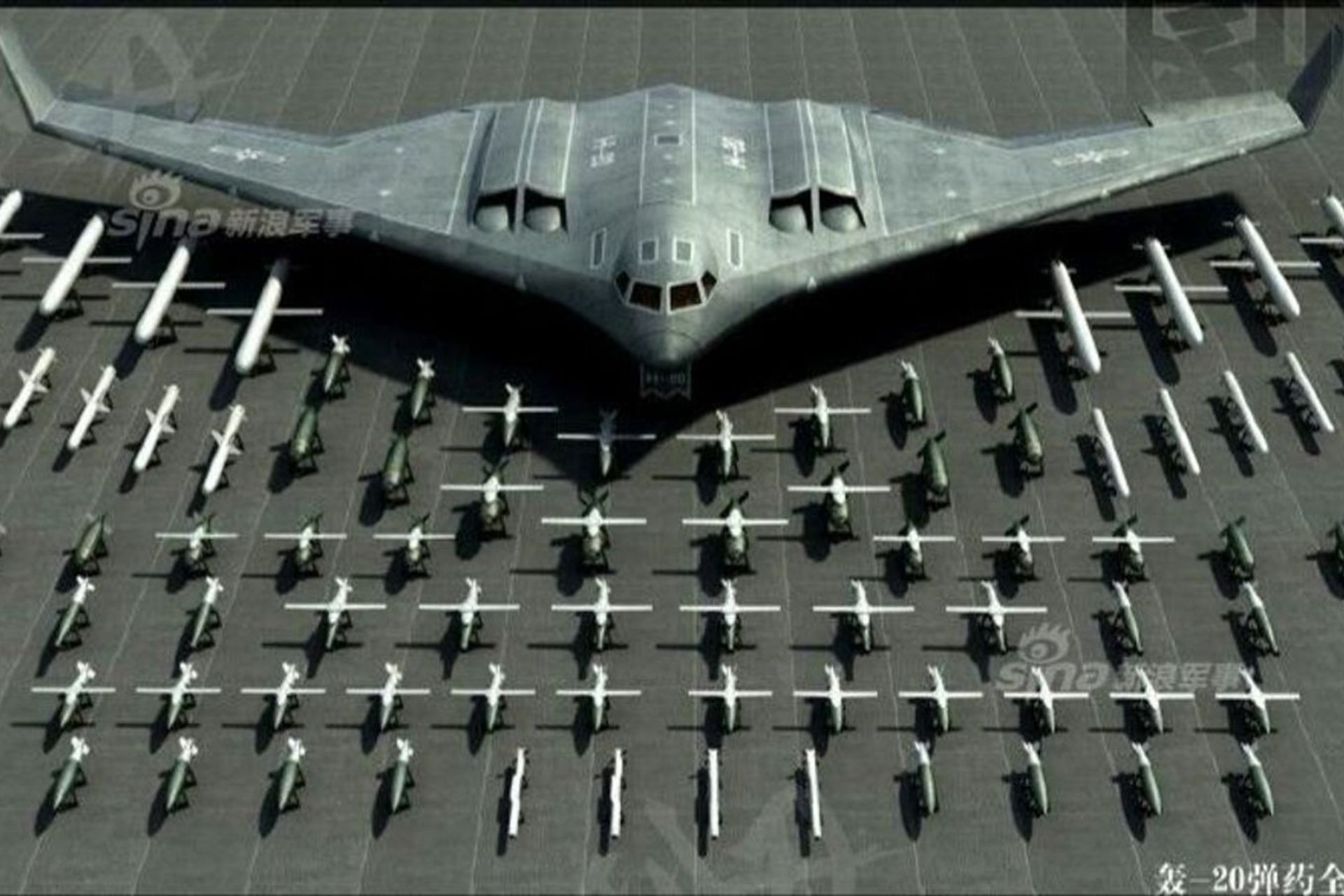Chinese Air Force Prepares for Tomorrow’s War with Technology Improvements

{loadposition bannertop}
{loadposition sidebarpub}
The Chinese are rapidly modernizing and developing their air force. It is estimated that China is already producing at least 240 combat aircraft per year. This includes approximately 100 J-20 Mighty Dragons, 40 J-10C Vigorous Dragons, over 100 J-16 Hidden Dragons, and an unknown number of J-11 and J-15 (derivatives of the Russian Flanker). But what combat aircraft are currently under development in China? Here are three known Chinese combat aircraft in development.Follow Army Recognition on Google News at this link
FC-31 after Takeoff (Picture source: Danny Yu| Wikimedia)
Shenyang FC-31 Gyrfalcon
The FC-31 (also called J-31 or J-35) is often compared to the American F-35 Lightning II fighter (the Chinese are often accused of having stolen F-35 technology). The FC-31 is currently under development and is a fifth-generation twin-engine fighter developed by Shenyang Aircraft Corporation (SAC). When it enters service, it will be China’s second fifth-generation fighter. It is unclear whether the PLAAF (People’s Liberation Army Air Force) is interested in acquiring the aircraft to operate alongside the J-20 or not.
The aircraft is said to have been developed by the aircraft manufacturer as part of a private initiative. SAC continued the development of the aircraft after its rival, the J-20 Mighty Dragon from Chengdu Aerospace Corporation, was selected by the PLAAF. While the J-20 is banned from export, SAC is reportedly attempting to export the FC-31. Pakistan and Egypt have emerged as potential buyers of the aircraft.
The FC-31 is also said to be developed with a carrier-based variant (China has a rapidly growing fleet of aircraft carriers). Commentators have dubbed this variant the J-35. The J-35 made its first flight in 2021 and is expected to operate from the new Chinese Type 003 aircraft carrier equipped with an electromagnetic catapult system. Mock-ups have been visible aboard the CV-18 Fujian aircraft carrier equipped with catapults (currently undergoing sea trials) and the older training aircraft carrier CV-16 Liaoning. This suggests that the aircraft is built to be compatible with the PLA Navy’s ski-jump carriers (the Liaoning and CV-17 Shandong).
According to The Diplomat, initial production could “start in the next two years at the earliest.” Historically, China has not had much success in the combat aircraft export market, but the collapse of the Russian market share and the development of cheap but effective Chinese fighters could change that. Previously, China exported low-end fighters (like the J-7) to cash-strapped Asian and African air forces.
Alleged concept view of J-XD Sixth-Gen fighter ( Picture Source : Osint sources )
J-XD Sixth-Generation Fighter
China is known to be producing a sixth-generation fighter called the J-XD (which means either “xīn dài” / 新代 meaning new generation, or “xià dài” / 下代 meaning next generation). Among global sixth-generation fighter programs (NGAD, BAE Tempest, F/A-XX, and the Franco-German FCAS), this program is perhaps the least known. The Diplomat states: “The PLA’s manned sixth-generation fighter, or new-generation manned fighter, is considered an established program that is under active development and is expected to emerge in some form during this decade.”
It is believed that China has already flown several demonstrators (possibly smaller in size), but the current indicators of the program remain largely unchanged from a few years ago. The dominant perception is that it is a tailless flying wing stealth design with a swept-wing tip. The Chinese will likely strive to include systems that the West is working on with its sixth-generation fighters (e.g., advanced sensors, loyal wingman drones, and laser weapons), but little can be said with certainty.
View of H-20 stealth bomber developped or In development by chinese industries ( Picture Sources Modern Weaponry)
H-20 Stealth Bomber
For now, the US Air Force’s B-2 Spirit remains the only stealth bomber in service – though that is expected to change as the B-21 Raider is now in low-rate production. The Chinese are known to be working on their own stealth strategic bomber design, which would be a flying-wing design similar to the B-2 Spirit. The existence of the project was acknowledged as early as the late 2010s.
The Chinese have hinted that the bomber will be unveiled soon, but little can be said about it. Some hints suggest that the H-20 could be more comparable to the older American B-2 Spirit than the new B-21 Raider. But little can be said for certain – The Diplomat even stated: “… uncertain rumors have circulated in recent months that the H-20 as a project might not be pursued in the previous consensual form of a flying-wing stealth bomber.”
It should also be noted that China is known to produce a number of high-end drones. Like the United States, it is likely developing advanced drones intended to function as long-range stealth reconnaissance drones, carrier-based drones, and loyal wingman drones (called Collaborative Combat Aircraft by the US Air Force). One of China’s most well-known advanced drones is the GJ-11 stealth flying wing.

{loadposition bannertop}
{loadposition sidebarpub}
The Chinese are rapidly modernizing and developing their air force. It is estimated that China is already producing at least 240 combat aircraft per year. This includes approximately 100 J-20 Mighty Dragons, 40 J-10C Vigorous Dragons, over 100 J-16 Hidden Dragons, and an unknown number of J-11 and J-15 (derivatives of the Russian Flanker). But what combat aircraft are currently under development in China? Here are three known Chinese combat aircraft in development.
Follow Army Recognition on Google News at this link
FC-31 after Takeoff (Picture source: Danny Yu| Wikimedia)
Shenyang FC-31 Gyrfalcon
The FC-31 (also called J-31 or J-35) is often compared to the American F-35 Lightning II fighter (the Chinese are often accused of having stolen F-35 technology). The FC-31 is currently under development and is a fifth-generation twin-engine fighter developed by Shenyang Aircraft Corporation (SAC). When it enters service, it will be China’s second fifth-generation fighter. It is unclear whether the PLAAF (People’s Liberation Army Air Force) is interested in acquiring the aircraft to operate alongside the J-20 or not.
The aircraft is said to have been developed by the aircraft manufacturer as part of a private initiative. SAC continued the development of the aircraft after its rival, the J-20 Mighty Dragon from Chengdu Aerospace Corporation, was selected by the PLAAF. While the J-20 is banned from export, SAC is reportedly attempting to export the FC-31. Pakistan and Egypt have emerged as potential buyers of the aircraft.
The FC-31 is also said to be developed with a carrier-based variant (China has a rapidly growing fleet of aircraft carriers). Commentators have dubbed this variant the J-35. The J-35 made its first flight in 2021 and is expected to operate from the new Chinese Type 003 aircraft carrier equipped with an electromagnetic catapult system. Mock-ups have been visible aboard the CV-18 Fujian aircraft carrier equipped with catapults (currently undergoing sea trials) and the older training aircraft carrier CV-16 Liaoning. This suggests that the aircraft is built to be compatible with the PLA Navy’s ski-jump carriers (the Liaoning and CV-17 Shandong).
According to The Diplomat, initial production could “start in the next two years at the earliest.” Historically, China has not had much success in the combat aircraft export market, but the collapse of the Russian market share and the development of cheap but effective Chinese fighters could change that. Previously, China exported low-end fighters (like the J-7) to cash-strapped Asian and African air forces.

Alleged concept view of J-XD Sixth-Gen fighter ( Picture Source : Osint sources )
J-XD Sixth-Generation Fighter
China is known to be producing a sixth-generation fighter called the J-XD (which means either “xīn dài” / 新代 meaning new generation, or “xià dài” / 下代 meaning next generation). Among global sixth-generation fighter programs (NGAD, BAE Tempest, F/A-XX, and the Franco-German FCAS), this program is perhaps the least known. The Diplomat states: “The PLA’s manned sixth-generation fighter, or new-generation manned fighter, is considered an established program that is under active development and is expected to emerge in some form during this decade.”
It is believed that China has already flown several demonstrators (possibly smaller in size), but the current indicators of the program remain largely unchanged from a few years ago. The dominant perception is that it is a tailless flying wing stealth design with a swept-wing tip. The Chinese will likely strive to include systems that the West is working on with its sixth-generation fighters (e.g., advanced sensors, loyal wingman drones, and laser weapons), but little can be said with certainty.

View of H-20 stealth bomber developped or In development by chinese industries ( Picture Sources Modern Weaponry)
H-20 Stealth Bomber
For now, the US Air Force’s B-2 Spirit remains the only stealth bomber in service – though that is expected to change as the B-21 Raider is now in low-rate production. The Chinese are known to be working on their own stealth strategic bomber design, which would be a flying-wing design similar to the B-2 Spirit. The existence of the project was acknowledged as early as the late 2010s.
The Chinese have hinted that the bomber will be unveiled soon, but little can be said about it. Some hints suggest that the H-20 could be more comparable to the older American B-2 Spirit than the new B-21 Raider. But little can be said for certain – The Diplomat even stated: “… uncertain rumors have circulated in recent months that the H-20 as a project might not be pursued in the previous consensual form of a flying-wing stealth bomber.”
It should also be noted that China is known to produce a number of high-end drones. Like the United States, it is likely developing advanced drones intended to function as long-range stealth reconnaissance drones, carrier-based drones, and loyal wingman drones (called Collaborative Combat Aircraft by the US Air Force). One of China’s most well-known advanced drones is the GJ-11 stealth flying wing.




